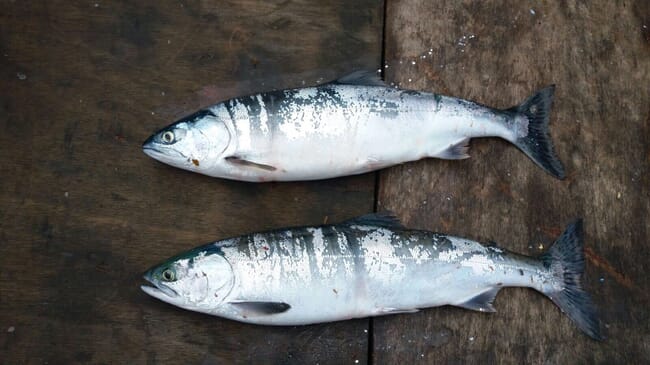The $1.3 million International Gulf of Alaska Expedition 2019, which was organised by the North Pacific Anadromous Fish Commission (NPAFC), involved 21 scientific personnel from five Pacific Rim countries – Japan, Korea, Russia, the United States and Canada.

The expedition is the first in decades to study salmon in the high seas and has already made many exciting discoveries. The science team was surprised to see that the second most abundant species of salmon in the catches was Coho. Scientists believe Coho stay in coastal areas in the winter, instead they have been found 1000s of kilometres away from the coast in the open ocean. The science team has been able to determine these Coho are from rivers ranging from the Puget Sound to northern British Columbia using ground breaking new DNA technology. The science team was also surprised that pink salmon – the most abundant species of Pacific salmon – has composed only 10 percent of their catches. Pink salmon are supposed to be particularly dominant in odd years, making their absence especially notable. The science team has taken 1000s of samples which will be analyzed over the coming months, leading to many more discoveries.
Travelling aboard the 62m Russian research vessel Professor Kaganovskiy, the team of scientists hailed from a wide variety of organizations including Fisheries and Oceans Canada, Pacific Branch of VNIRO (TINRO-Center), NOAA Fisheries, the Pacific Salmon Foundation, the NPAFC, the University of British Columbia, the University of Victoria, Hokkaido National Fisheries Research Institute, and Gangneung-Wonju National University.
Upon their return, the scientific crew received a commendation for their hard work from Dr Dick Beamish, the scientist who conceived and planned the expedition and dignitaries from the participating countries including Dr Kirill Kolonchin, Director of the Russian Federal Research Institute of Fisheries and Oceanography, and Chief Bob Chamberlin, Vice-President, BC Union of Indian Chiefs.
“The Gulf of Alaska Expedition had two major objectives. The first was to carry out new research designed to identify the mechanisms that regulate the abundance of salmon. The second was to assemble a team of international researchers who would use the experience of the Russian captain and crew to show that important discoveries can best be made through international cooperation. It will take some time to measure the success of our objective relating to mechanisms, but we have clear evidence that an international team of scientists is an excellent way to make the discoveries needed to ensure a future of responsible stewardship,” said Dr Beamish.
The project has been jointly funded by a combination of government, industry, NGO and private contributions. Donors include the Pacific Salmon Foundation, Fisheries and Oceans Canada, British Columbia Salmon Farmers Association, Harmac Pacific, Pacific Salmon Commission, Province of British Columbia, Ross Beaty (Sitka Foundation) and Tony Allard.
The expedition is part of the International Year of the Salmon (IYS) – a five-year initiative of the NPAFC and its North Atlantic partner, the North Atlantic Salmon Conservation Organization (NASCO), as well as NGOs including the Pacific Salmon Foundation, with a goal to establish a new hemispheric-scale partnership of government, Indigenous Peoples, academia, NGOs, and industry to effectively connect the hundreds of organizations that have capacity and desire to address the scientific and social challenges facing salmon and people in an increasingly uncertain environment.
“Salmon are more than just food. They are intrinsically linked to our identity, they are fundamental to Indigenous communities and they are a significant indicator of overall environmental health. Our government is committed to building strong partnerships to help restore our wild salmon stocks. The work undertaken during this trip adds to the growing body of knowledge about salmon and will help inform science-based decisions when it comes to addressing challenges facing salmon populations. We owe it to one another to manage our marine resources wisely, restore what we have lost and build protection for the benefit of future generations,” said Jonathan Wilkinson, Minister of Fisheries, Oceans and the Canadian Coast Guard.



